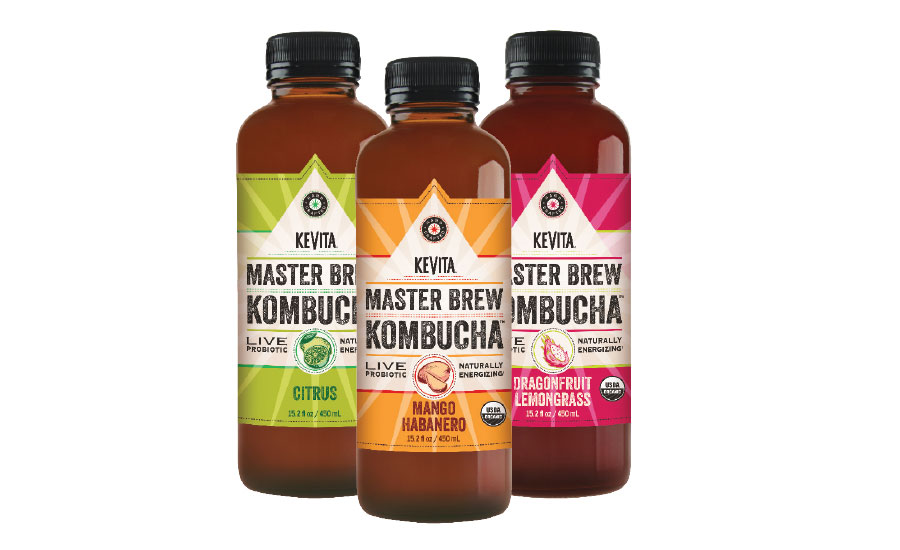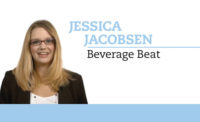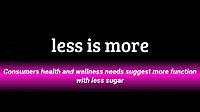Consumers drawn to kombucha’s health properties
Beverage companies releasing products in fruit, traditional soda flavors

Appearing in the June 7 issue of the Journal of the American Medical Association, the "Trends in Obesity Among Adults in the United States, 2005 to 2014” study concluded that the prevalence of obesity was 35 percent among men and 40 percent among women in 2013-2014, while an increased prevalence was found among women, but not men, during the 2005-2014 timeframe.
With obesity concerns looming for U.S. consumers, health and wellness remains a popular talking point. Health-focused consumers also want solutions, and kombucha is entering their radar.
“There seems to be a growing health consciousness in the U.S., with early adopters doing research on the Internet and propagating their findings on social media,” says Roger Dilworth, senior editor for New York-based Beverage Marketing Corporation (BMC). “Although a lot of the health consciousness is more talk than action, it seems that enough people have tried kombucha, and found that it is beneficial, to drive repeat sales.”
In a March 28 blog post titled “How kombucha stands out in the U.S. beverage industry,” Diana Kelter, foodservice analyst for Chicago-based Mintel, also highlighted the healthful properties associated with kombucha.
“As highlighted in Mintel’s 2016 Foodservice Trends, kombucha, a fermented tea that borders on the 0.5 percent alcohol threshold, is catching on in 2016,” the post stated. “A crossover drink that’s nestled in the functional-tea category, kombucha appeals to multiple consumer preferences, with flavors combining to make it a stand-alone product, or being added to other alcoholic beverages to lend its health halo.
“Kombucha is touted for a variety of health benefits including detoxification, joint health, digestion/gut health and immune-boosting properties,” it continued. “In line with other beverages in the health category, such as cold-pressed juices and probiotic waters, it is the blend of flavors that is taking this beverage to the next level.”
When it comes to core consumer demographics, it seems as though millennials are leading the charge. According to Mintel’s report “Carbonated Soft Drinks – US 2015,” 51 percent of those aged 25-34 report drinking kombucha. The report also noted that nearly a quarter (23 percent) of all respondents indicated that they drink kombucha with 28 percent being male and 18 percent being female.
BMC also has been exploring which consumers are turning to kombucha. “We [teamed] with Fluent Group on their beverage survey of ‘college-age millennials,’ which found that although many had not tried kombucha, the ones that have tried plan to repeat purchase by about a two-to-one margin — a better ratio than most other beverages,” Dilworth explains.
Flavor innovations also appear to be a bright spot for the fermented tea segment. Kelter’s blog post noted that brand owners are appealing to consumers who want a healthy alternative to carbonated soft drinks by introducing traditional soda flavors.
BMC’s Dilworth notes that fruit flavors remain the dominant option, but opportunities could abound. “In the future kombucha marketers could conceivably try to differentiate their products on the types of black tea employed — e.g., pu’erh, assam, Darjeeling etc., but this is just speculation on my part,” he says.
Although kombucha has been able to appeal to consumers’ desire for healthy food and beverage options, the growing dollar sales are reflected by its higher price point versus high volume sales, Dilworth explains.
Yet, the smaller base is not inhibiting its growth. “We have wholesale dollar sales approaching $400 million for 2015, up from around $260 million in 2014,” he says. “Volume has grown from approximately 12 million gallons in 2014 to about 17 million in 2015.”
Regulating its future
An area of concern that has affected the U.S. kombucha market is regulating the alcohol level to maintain a consistent 0.5 percent.
In its March report titled “RTD Tea in the US,” Chicago-based Euromonitor International noted regulatory issues that brand owners could be facing.
“Despite the established positioning of kombucha as a non-alcoholic beverage, the drink faces regulatory complications from the small amounts of naturally occurring alcohol it contains; a by-product of fermentation,” the report states. “Under U.S. law, any product containing greater than 0.5 percent alcohol by volume (ABV) is subject to the Alcohol, Tobacco, Tax and Trade Bureau (TTB). In 2015, kombucha manufacturers received first warnings, followed by fines, for drinks found on store shelves which tested higher than 0.5 percent ABV. Regulating kombucha as an alcoholic beverage could create costs which are insurmountable for the beverage, which is made almost exclusively by small producers, potentially derailing forecast growth.”
However, not all analysts anticipate regulatory issues for the emerging market. “There appear to be efforts to self-regulate in terms of alcohol levels and calorie count in order to avoid a possible consumer backlash in the future,” BMC’s Dilworth says. “I don’t think such a backlash is very probable since kombucha seems to be one of the very few beverages that seem to deliver on at least some of its health promises. I believe kombucha’s future is very bright as people increasingly become educated about real health benefits rather than mere hype.”
Looking for a reprint of this article?
From high-res PDFs to custom plaques, order your copy today!






